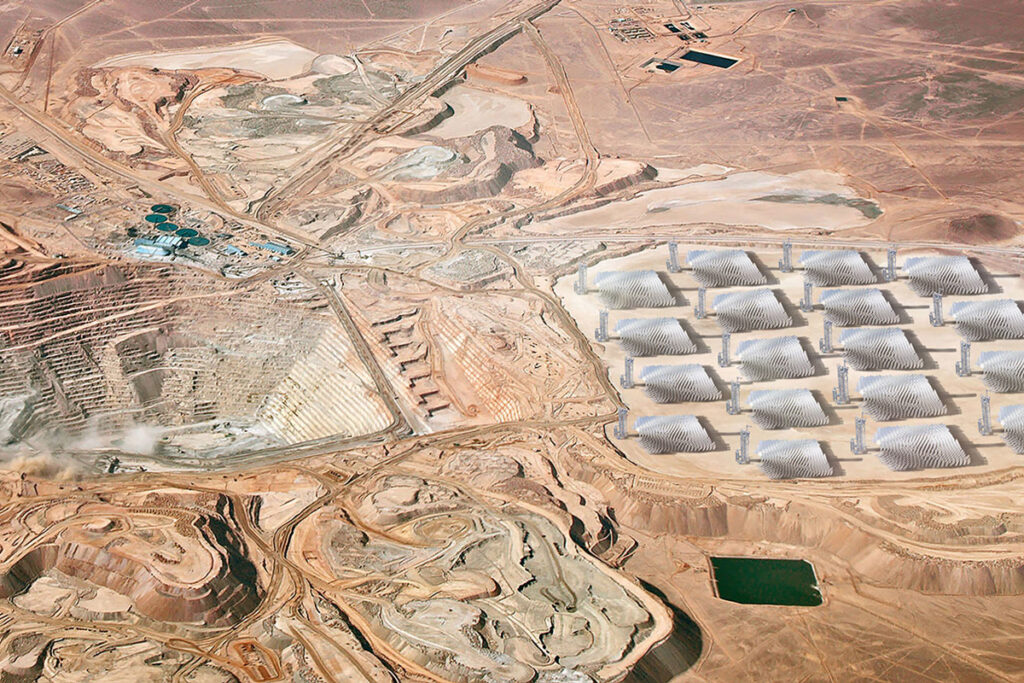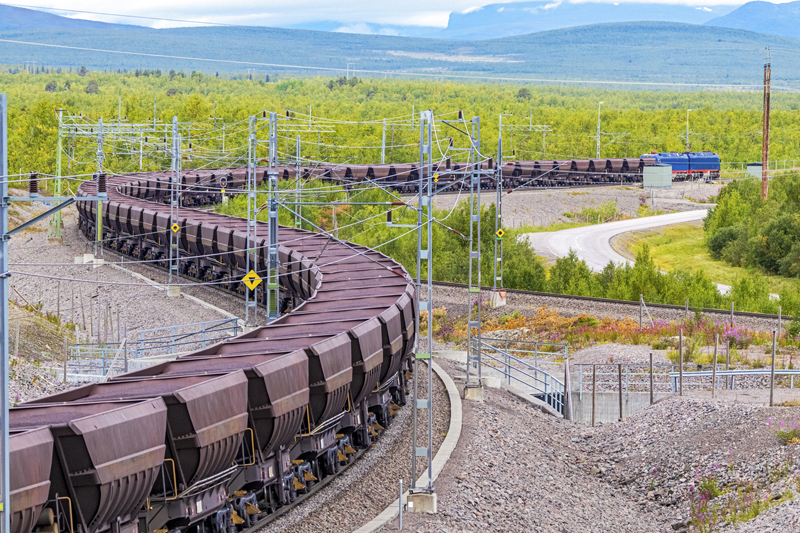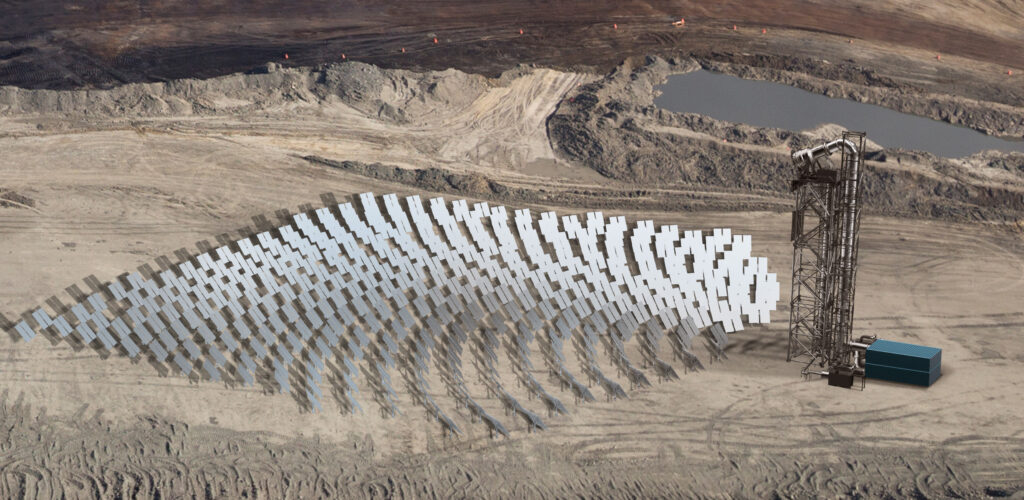GOING OFF-GRID

Modular, scalable 247Solar Plants
Off-grid mines have always had to generate their own power. Now, information from GlobalData indicates that even grid connected mines are adding on-site generation, typically from renewable sources. This is allowing them to both decarbonize their operations and lower their power costs.
In a recent issue of Mine Magazine published by GlobalData, author Heidi Vella notes that energy consumption is a major expense for mining companies, comprising approximately 30% of total cash operating costs. To adapt, data collected for around 3,000 mine sites shows a trend towards miners investing in decentralized on-site power supply.
Emissions reductions
At present, says Vella, nine of the top ten publicly listed mining companies have set scope 1 and 2 net-zero goals for 2050, with reduction ambitions to meet in the interim. David Kurtz, director of mining & construction at GlobalData, says, “When it comes to reducing their emissions, mining companies have really only got a couple of levers to pull – one is shifting to renewable power.”
Many miners are investing in natural gas as an alternative to diesel or other heavy fuels, but also in renewables, which are becoming increasingly affordable. For example, writes Vella, “the cost of solar power has dropped by nearly 90% over the last decade and the cost of batteries is also steadily falling.”
“Our data doesn’t cover the whole market, but it gives an indication that new on-site power under development on mines is much more weighted towards natural gas and solar power,” says Kurtz. “[A]s the cost of renewables such as solar and batteries comes down and becomes more reliable it is a more feasible option for sites,” he adds.
Economic advantages
Vella quotes Eric Saderholm, formerly Newmont Mining’s exploration manager for the Western US and now managing director of exploration for American Pacific Mining, who says “on-site power investment is ramping up, driven by both the bottom-line cost and environmental responsibility.”
Saderholm cites the example of Barrick’s Nevada Gold Mines, which has invested in a 200MW solar power plant system. “This makes sense in Nevada,” he says, “because mines here will likely have a 50-year lifespan, so can absorb their capex expenses down the road, but there is also 300 days a year of solar energy, clear skies; it is almost a no brainer.”
Reliability and security
Another driver of the shift to on-site power is the need for reliability and security. Bas Mutsaers, global strategy, technology and marketing lead at Schneider Electric, says, “For industries such as mining, uninterrupted power is crucial to maintain operations and avoid costly downtime … For example, mining companies that operate in remote areas often face unreliable grid connections, which leads them to invest in on-site power solutions to ensure continuous operation.”
Mutsaers also cites financial benefits around energy independence. “On-site power generation can help companies mitigate rising energy costs or contractual limits and reduce exposure to price volatility in energy markets,” he says.
“At the end of things, you want to provide your investors with a return”, says Saderholm. “However, if the bottom line of profit indicates that you should go totally renewable, or at least partially renewable, I think mining companies will make the right decision.”
Read more here.
A ROUND-THE-CLOCK CLEAN ALTERNATIVE TO FOSSIL FUELS
Achieving high levels of renewable energy is particularly challenging for off-grid mines in remote locations because intermittent PV or wind with costly batteries still require dirty, expensive diesel for backup. Many mines also require high-grade heat for on-site processing and other uses. 247Solar offers the only renewable energy technologies that:
- Integrate seamlessly with PV or wind to provide 24/7 dispatchable baseload power
- Provide industrial grade heat up to 970 ℃ (1800 ℉) for ore processing, steam generation and other applications
- Provide their own backup by burning almost any locally available fuel to produce power even when storage is depleted, eliminating gensets and reducing fuel costs up to 80%
Get in touch to learn more
ICMM: WE CANNOT MINE AT ALL COSTS

BeyondImages/iStock
The London-based International Council on Mining and Metals (ICMM) is CEO-led leadership organization working for a safe, just and sustainable world that is enabled by responsibly produced minerals and metals.
In an interview published in Mining Weekly ahead of her keynote presentation at the International Future Mining Conference 2024, Danielle Martin, the Co-Chief Operating Officer and Director of Social Performance at ICMM, asserted, “Regardless of the necessity of mining, we cannot mine at all costs.” The mining industry must, she said, “redefine what ‘responsible mining’ means if mining is going to be able to fulfill the role society needs it to now and in the future.”
The organization’s website makes clear that, “It is self-evident that no matter where we are in the world, metals and minerals are a part of our everyday life. Simply put, the ‘green’ version of almost anything means the use of more metals.”
“Few would argue,” says Martin, “that the mining industry of the future needs innovation and technology in how it finds and develops mines and produces the minerals and metals the world needs … This is particularly so in the face of increased demand for critical minerals, more complex and challenging locations and ore bodies.”
Beyond extraction
But she continues, “there’s a lot more riding on mining’s future success than innovative and technically advanced mining techniques. Better and more consistent E-S-G performance (with no greenwashing), more equitable participation of host and land-owning communities (built on respect and trust), and a safer and more diverse workforce is fundamental.
“There’s also some work for us to do on how people feel about mining that will be essential to the collaboration and partnerships we need for the future.”
In part, Martin suggests that perceptions of mining may be responsible for graduates, women in their mid-careers and other workers “voting with their feet” and eschewing mining careers. She notes that, “Graduate enrolments in mining degrees have drastically reduced in Australia, Canada and the US, and the UK now has no undergraduate mining course, having once been a global leader.”
We know, she says, “in addition to continue to drive for better E-S-G performance for future mining, we also have a perception – and trust – issue to face.”
Read more.
US SENATORS RELEASE ENERGY PERMITTING REFORM BILL

US Senator Joe Manchin.
July 22nd saw the introduction of an important energy permitting reform bill in the United States Senate. As reported in Mining.com, the Energy Permitting Reform Act of 2024 could speed up approvals of clean-energy, pipeline and electricity transmission projects by shortening some federal environmental reviews and setting limits on court challenges.
In announcing the proposed legislation, US Senator Joe Manchin (I-WV) said, “The United States of America is blessed with abundant natural resources … Unfortunately, today our outdated permitting system is stifling our economic growth, geopolitical strength, and ability to reduce emissions.”The bill revives a previously stalled legislative effort to fast-track energy projects.
“A commonsense, bipartisan piece of legislation will speed up permitting and provide more certainty for all types of energy and mineral projects without bypassing important protections for our environment and impacted communities,” said Manchin.
The article quotes Mark Compton, executive director of the American Exploration & Mining Association (AEMA) as saying, “Our inefficient federal permitting system is a significant deterrent to attracting investment in the United States to explore for and develop strategic mineral resources, and it has resulted in the US being increasingly reliant on foreign countries … The permitting reforms in this deal are a good start.” The bill is not yet law, but it has bipartisan, if not yet majority, support.
Read more here.
FOLLOW & JOIN 247Solar
LinkedIn US, LinkedinEU, Twitter, YouTube
Contact: info@247solar.com
